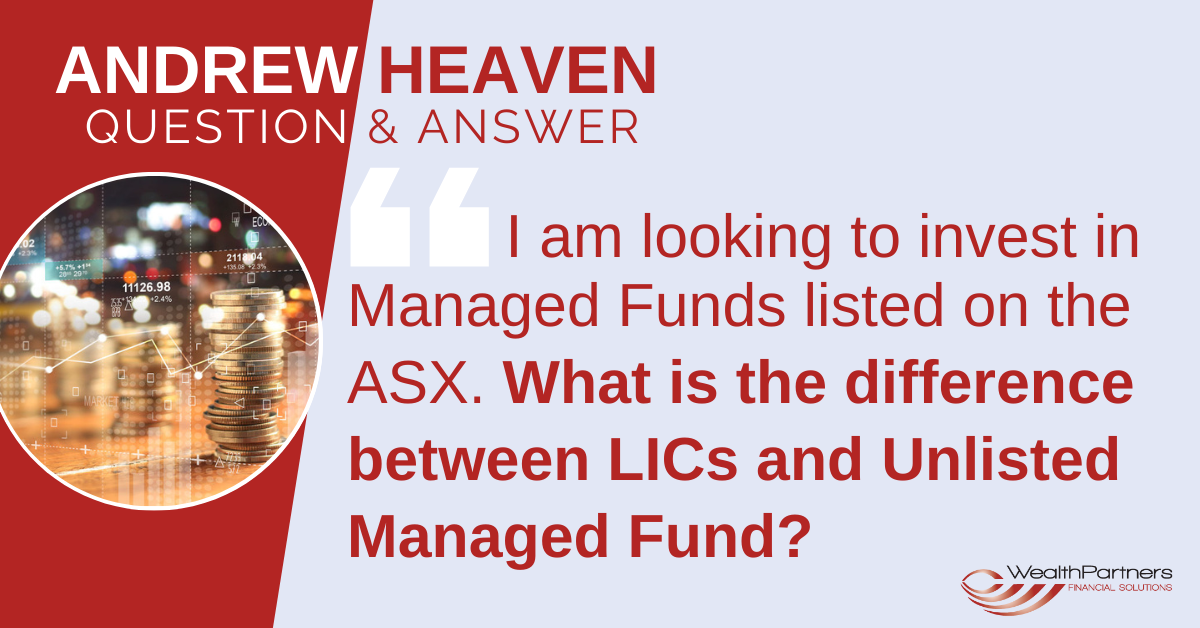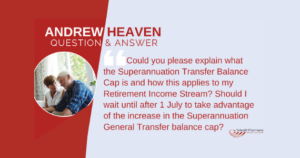Q: I am looking to invest in Managed Funds listed on the ASX. What is the difference between Listed Investment Companies (LICs) and Unlisted Managed Fund?
A: Listed Investment Companies (LICs) are managed investment funds that can be bought and sold on the ASX on a similar basis to an ordinary share. LICs in Australia predominately offer exposure to Australian and International shares but may include exposure to other asset classes such as property and fixed interest.
LICs are closed-ended so there are a finite number of shares available. However from time to time unit holder may be offered the opportunity to purchase additional shares in the LIC by way of a Product Disclosure Statement (PDS) and offer document.
The price of the LIC not only reflects the underlying value of the portfolio of assets but also demand for the expertise of the Investment Manager. Whilst LICs are obligated to report their net tangible assets (NTA), the price of the LIC is determined by the buyer and the seller. Consequently, LIC’s will often trade at a premium or discount to their net tangible assets which can be a major disadvantage depending on the prevailing demand for the LIC.
Unlisted Managed Funds can be bought by applying directly to a Fund Manager or via a Financial Adviser. Funds can be bought individually or via a platform; which typically offers a range of investment options. A minimum investment amount will apply, typically between $5,000 and $25,000 and in some cases up to $500,000.
Unlike LICs, the Unit price of an Unlisted Managed Fund will reflect 100% of the value of the underlying investments within the fund. However the Investment Manager may charge a Buy/Sell spread to reflect the transaction costs of entering or leaving the fund.
Details of the estimated buy/sell spread should be disclosed in the PDS of the fund. Estimates of Buy/sell spreads will vary depending on the type of assets being bought and sold and the complexity of the underlying portfolio.
Unlisted Managed Funds may be less liquid than their listed counterparts. Investors may be subject to restrictions on when they are able to withdraw from the fund. In some cases this may be 5 years or subject to limited withdrawal windows often monthly or quarterly.
Make sure you understand the underlying investment you are buying. They should be appropriate to your investment time frame and your tolerance for investment risk. Research the quality of the investment manager and seek appropriate professional advice.


